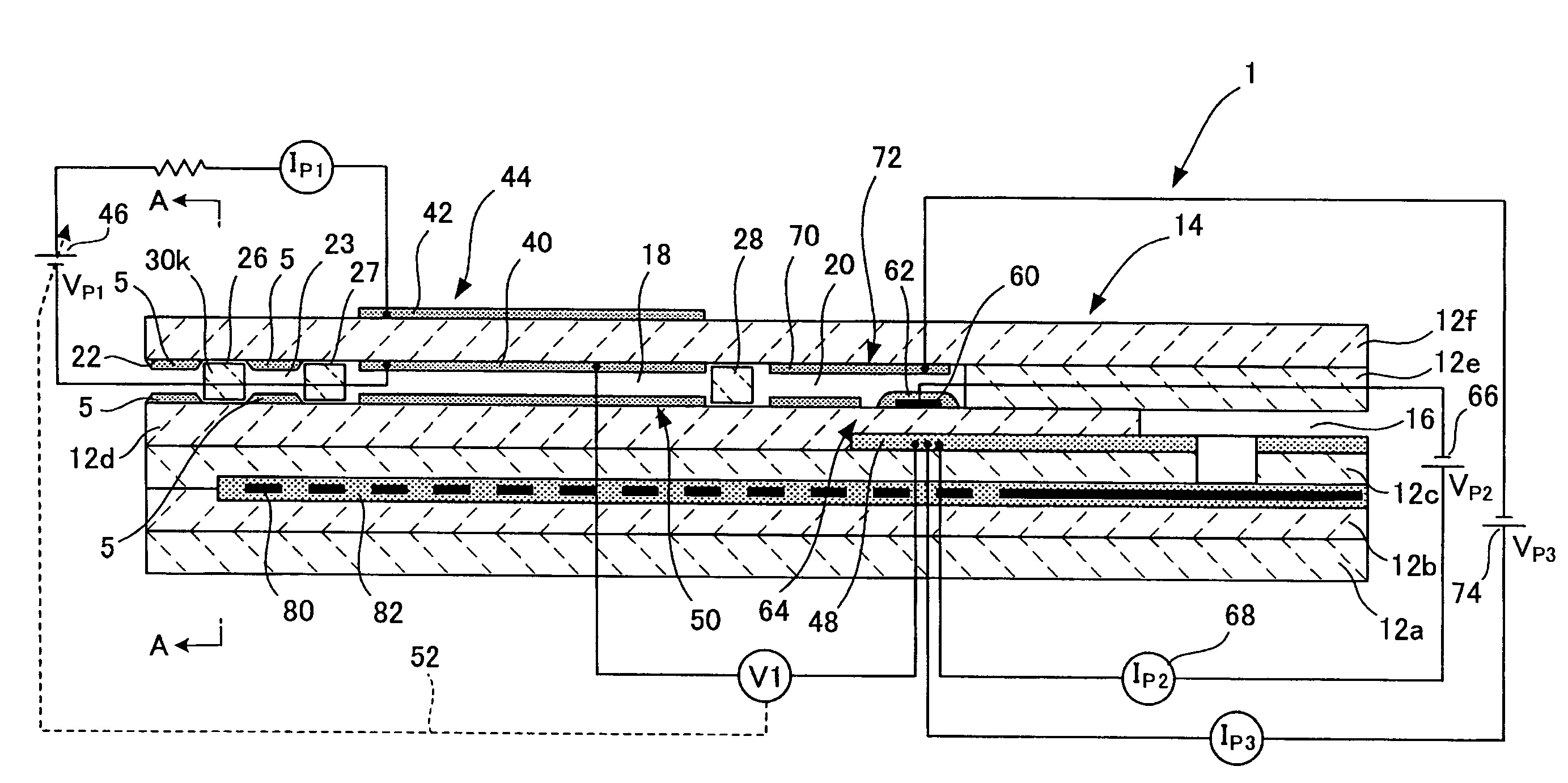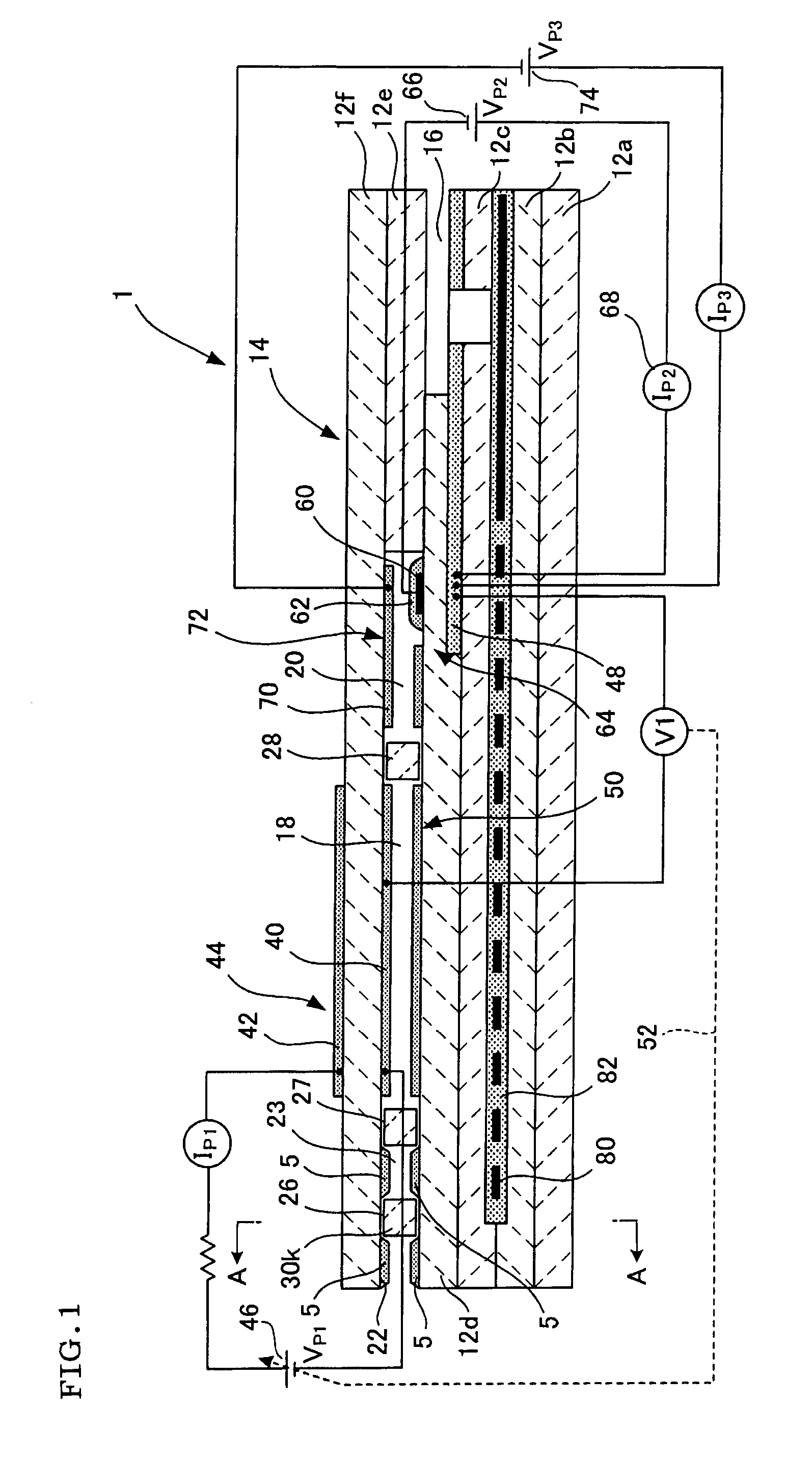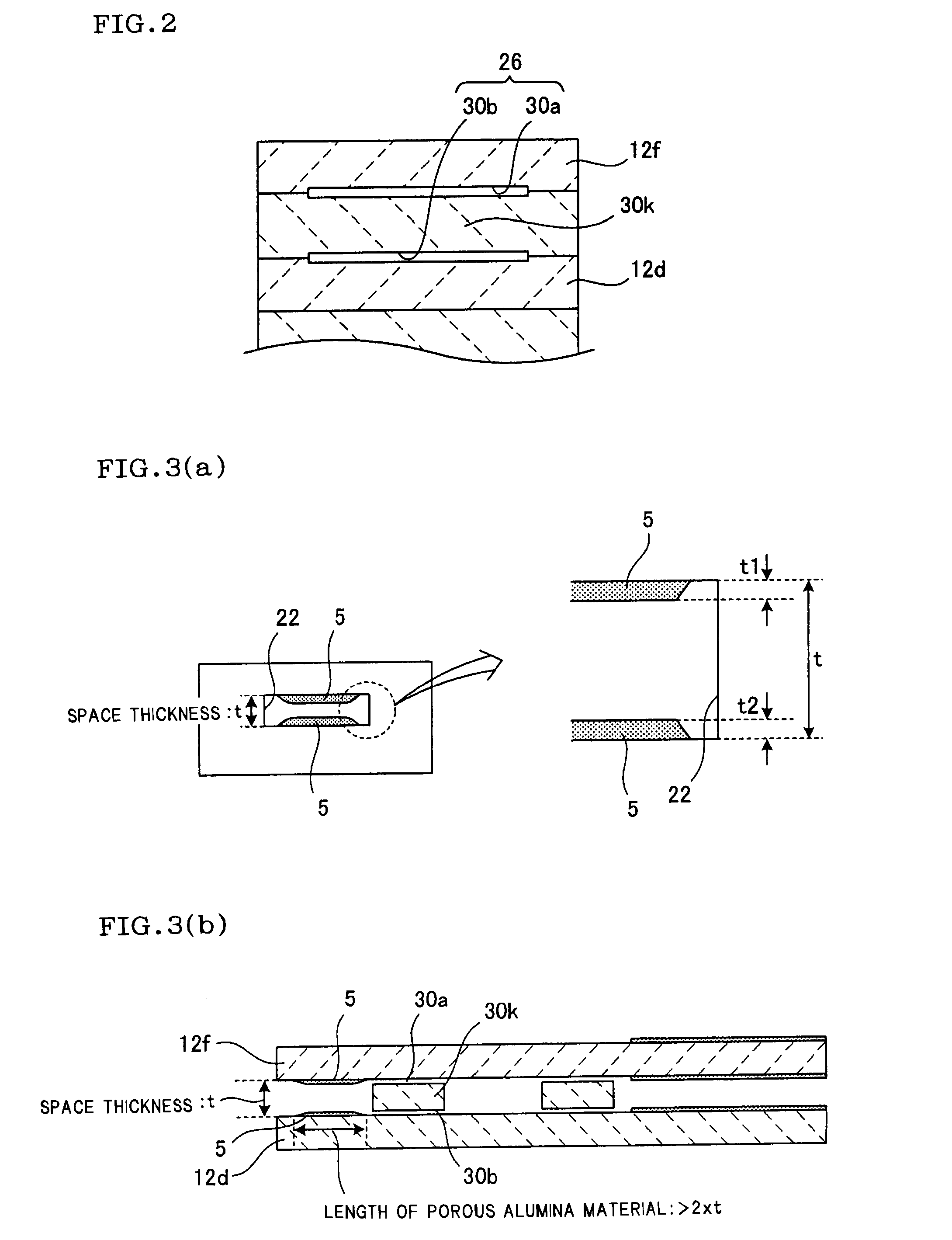Gas sensor and nitrogen oxide sensor
a technology of gas sensor and nitrogen oxide, applied in the field of gas, can solve the problems of gradual reduction of the sensitivity of the gas sensor to to-be-measured gas components (e.g. nox), and achieve the effects of reducing the sensitivity to to-be-measured gas components, preventing the formation of harmful substances, and high durability
- Summary
- Abstract
- Description
- Claims
- Application Information
AI Technical Summary
Benefits of technology
Problems solved by technology
Method used
Image
Examples
embodiment 1-1
[0042]The gas sensor 1 according to the embodiment 1-1 has, as shown in FIG. 1, a sensor element 14 constituted by six (for example), laminated, solid electrolyte layers 12a to 12f made of a ceramic using an oxygen-conductive solid electrolyte such as ZrO2 or the like.
[0043]In the sensor element 14, the first to third layers from below are a first substrate 12a, a second substrate layer 12b and a third substrate layer 12c, respectively; the fourth and sixth layers from below are a first solid electrolyte layer 12d and a second solid electrolyte layer 12f; and the fifth layer from below is a spacer layer 12e. Between the third substrate layer 12c and the spacer layer 12e, a space 16 for introduction of reference gas, into which a reference gas (e.g. air) used as a reference in oxide measurement is to be introduced, is surrounded and formed by the lower surface of the spacer layer 12e, the upper surface of the third substrate layer 12c and the side of the first solid electrolyte layer...
embodiment 1-2
[0086]A gas sensor according to the embodiment 1-2 of the present invention is shown in FIG. 4. In the embodiment 1-2, a first diffusion resistance portion 26, a second diffusion resistance portion 27 and a third diffusion resistance portion 28 are formed as slits, and harmful substance-trapping layers are formed in the gas passage portions formed by the slits 30a and 30b of the diffusion resistance portions 26, 27 and 28.
[0087]In FIG. 5(a) and FIG. 5(b) are shown partially enlarged views for explaining the harmful substance-trapping layers 5 of FIG. 4. As shown in FIG. 5(a), the harmful substance-trapping layers 5 are formed on the walls forming the gas passage portions, specifically on the lower surface of the second solid electrolyte layer 12f and on the upper surface of the first solid electrolyte layer 12d. Or, as shown in FIG. 5(b), the harmful substance-trapping layers 5 may be formed on the upper surface and lower surface of the wall 30k between slits sandwiched by the slits...
embodiment 1-3
[0089]An embodiment 1-3 is shown in FIG. 6. In the embodiment shown in FIG. 6, harmful substance-trapping layers 5 are formed in a gas inlet 22 through which a to-be-measured gas is introduced from an external space into an internal space, and in a buffering space 23 formed between diffusion resistance portions 26 and 27. The harmful substance-trapping layers 5 formed in respective locations are formed by being filled in a gas passage.
[0090]The harmful substance-trapping layers 5 formed by being filled in a gas passage are desirably formed by a porous alumina material having a porosity of 40% to 80%, in order to secure the flow of to-be-measured gas. By forming the harmful substance-trapping layers 5 in this way, the flow amount of to-be-measured gas can be secured, a harmful substance can be trapped, and the to-be-measured gas can be sent to a detection electrode 60 side. Thus, the present embodiment 1-3, when fitted to, for example, the exhaust system of internal combustion engine...
PUM
 Login to View More
Login to View More Abstract
Description
Claims
Application Information
 Login to View More
Login to View More - R&D
- Intellectual Property
- Life Sciences
- Materials
- Tech Scout
- Unparalleled Data Quality
- Higher Quality Content
- 60% Fewer Hallucinations
Browse by: Latest US Patents, China's latest patents, Technical Efficacy Thesaurus, Application Domain, Technology Topic, Popular Technical Reports.
© 2025 PatSnap. All rights reserved.Legal|Privacy policy|Modern Slavery Act Transparency Statement|Sitemap|About US| Contact US: help@patsnap.com



